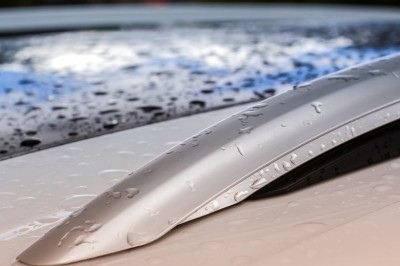HowTto Revive Your Outboard Engine
Having recently had a close look at my brand new Tohatsu outboard (well, its eighteen months old!) I have been rather alarmed to find that this once pristine and beautiful beast has in fact at this tender age begun already to suffer the ravages of living outdoors in sunny Queensland. I happened to have a bit of a look around and have started to find quite a lot of spots where the dreaded corrosion has begun its evil work.
I was quite interested to find out around the marina that many outboards are still very young but are suffering quite badly from the combined effects of wind and weather. Most outboard engines (unless used for full time cruising) probably only run about sixty odd hours a year, so its fairly common to find them in fairly ropey physical condition whilst mechanically they are still have barely done a good days work .
The outboard engine manufacturers do a sterling job generally keeping the elements out by using several layers of good quality primers and hardened paints but naturally after a while in general use, chips, knocks dings and minor collisions take their toll on the new paint. Once this precious seal against the weather is compromised, salt can reach the exposed metal and incredibly quickly, the corrosion sets to work.
The engine manufacturers use the best kind off aluminium alloys available both for economy and especially lightness but as we know aluminium is extremely susceptible to saltwater corrosion. You are all doubtless familiar with the dreaded blisters that appear on the paintwork, some intact, some broken and the familiar whitish-grey powder that appears. This of course is aluminium oxide or hydroxide, take your pick!
If this slippery slope to ruin continues it will not be long before the engine will be beyond the point of redemption so some prompt action is required on your part.
THE PREPARATION
Generally speaking the idea is to get the engine off the boat and its pretty important to get it somewhere dry and out of the weather. However, this is not critical as long as the weather is dry and its not going to be wet or damp as this will really prevent any of the desired result from happening. Naturally, some large outboards cannot be taken off the boat and will have to be dealt with in situ, once again, a suitable out of the weather spot should be found.
REQUIRED TOOLS
Not many tools are required for this job and the following should be included.
Electric drill.
An assortment of wire brushes both hand and rotary for removal of dirt, scale, oxides, flaky paint.
Selection of wet and dry sandpaper ranging from 150 to around 1200.
A sandable Epoxy two pack putty for filling, a selection of spatulas for application and mixing. There are several choices out there in the markets and your local hardware store will advise this.
PAINT.
Most outboard engine manufacturers have all of the range of spray cans available for touch up jobs but where a reasonable amount is needed, it is often possible to get a really good match in you local Auto superstore. Primer is usually Zinc Chromate based but care should be taken not to inhale the fumes. Needless to say a really good mask system should be used whilst spray painting plus all the usual precautions should be taken whilst using flammable liquids such as thinners and so on. A couple of really fine paint brushes can be used for touch ups and reaching the hard to get places. (the paint can be sprayed out of the can into the spray can plastic lid for this job.)
A Spray can of paint remover.
A couple of small files to reach inaccessible places
DECALS
Replacement decals for outboard motors are ridiculously overpriced and I cannot, for the life of me, see why. My advice is to ignore them completely and if they are not too bad, mask them up carefully and if necessary, touch them up yourself. Failing this, it is possible to get replacements made at your local computerised sign shop.
Outboard engine stockists and manufacturers take note: We are sick of getting cleaned up with your stupidly priced decals!!!
WHAT WE DO.
The first job is to really make sure the engine is cleaned as thoroughly as possible and remove all traces of oil, petrol, grease and dirt using a degreaser where needed. Hose down all loose dirt and dry off thoroughly.
Remove all anodes... store them away or buy new ones!
Once the motor is dry, gently remove all traces of loose and flaking paint, rust and any salty deposits on the leg and motor. This is done using the electric drill and wire brushes.
NOTE: Do not overspeed the drill or push too hard on the soft aluminium alloy as it is relatively soft and can be damaged very easily. The paint coating is usually quite thin and easily removed.
The time has come to mix up the filler and fill in all the dings and damaged areas of the motor. Leave to cure thoroughly and when cured sand back smooth using the assorted grades of wet and dry. When satisfied, blow away all dust with a compressor or simply hand brush away all the dust. Final finishing will show up any further areas to fill.
Once again hose off all residue and dry it out completely.
Mask up any areas that do not need to be sprayed...far better to mask now than to try to scrub off the overspray later on!
PRIMER COATS.
There is no set plan as to how many coats of primer to spray on but within reason, the more coats you can afford to put on, the greater the final protection will be and the better finish you will attain. You have all heard of the old saying, "Its all in the preparation" in this case, nothing could be truer!
FINAL COATS
Many books have been written about the techniques of spray painting but here are a few tips of my own.
Dont spray in direct hot sunshine.
Dont spray in the rain or excessive damp
Dont flood the job
Dont spray it on too dry!
Let each coat dry thoroughly before the next.
If its windy, go shopping or watch the footy, dont spray!
NEVER attempt to repair any runs while the paint is wet...period!! It is tempting but ruinous to dab any runs dry, it does not ever work.....walk away, come back when its dry and simply rub it down with wetndry and then start again!! I learned about this the hard way when spraying my brother in laws cars for a short while ( he used to spray Rolls Royces for a living, he knew!)
Attempt to spray in a fine but wet mist...get a wet edge to the paint and it will dry with a thrilling gloss..its true ,I tell you!
Stand back and be proud!
You will be amazed at hot the years appear to drop off an ouboard engine with some of this TLC ..in the same way, beware of the same treatment when you buy a second hand motor, the same applies. As my brother in law used to say,
" All weve done is sprayed a few quid into it"
How true is that?
Terry buddell is a freelance writer for several boating magazines and designs and sell his own boat plans from his website.
If you would like to read more informative articles like the one above, why not visit www.dolphinboatplansDOTcom
Terry buddell is a freelance writer and lives on board the yacht he built in Gladstone Australia. terry designs boats and has evolved the Easy-Build method of boatbuilding boats that require no internal framing. Terry is a Marine Surveyor and has a website where he sells his boat plans and designs !
If you are interested in more articles and informative info about building your own boat, why not visit www.dolphinboatplans.com
If you are interested to learn more and read some more articles about guitar building for beginners, why not visit www.buildaweissenborn.com and find out more!






















